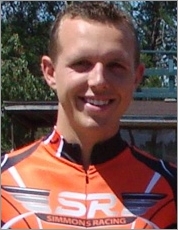 | ||
| ||||||||
By Rob Bell Just the word "periodization" may be enough to stop you from reading any further. But hang in there. As ugly as it sounds, periodization is a tool that can take your skating to the next level. It's goal is simple: to get you to the starting line of your big races in peak condition, both physically and mentally. It does this by creating a training plan that makes time for building both speed and endurance and respects the need for rest. How to periodize: Make a race calendar
Jot down the date of the races you plan to skate. Assign the letter A or B to each race, depending on how important it is to you. Pick no more than two A races and designate the others as B races. For example, you could make St. Paul and Duluth your A races and the early-season races your B races. Figure out the length of your season For example, my 2008 season was 23 weeks, from the Texas Road Rash in April to the NorthShore in September. Block out your calendar Your season should consist of the following sections:
It begins right after the last race of your season. Make it real. Some skaters think it's a great time for cross-training. But I suggest you lock up your skates, running shoes, bike — whatever you use to train; and keep them locked away for at least ten days and up to a month. Forget about training. Instead, do something special with your significant other ... work on the house ... spend time with the kids — anything that gives you a break from your skates. The offseason not only helps your body recover, it also gives your mind time to rest so you're less likely to burn out next season. You'll know it's time to move on to the preseason when you can’t stand life without your skates any more. 2) Preseason Block off four to six weeks on your calendar as your preseason. During this time, focus on skating technique rather than on intensity and distance. Off-skate exercises (as seen on bonttv.com) are a great fit for the preseason — and are also good for the base and intensity phases. Cross-training with skiiing, cycling and running work well, as long as the intensity is kept moderately low and the duration somewhat short. This is also a great time to organize social or group skates. Start thinking about moving into the next phase at least eight weeks prior to your first race. Now it's time to build your base. This is where you lay the foundation for the endurance that will keep you in the pack during long races and give you the reserve you need for the final sprint. Let's break this phase down into Base 1 and Base 2. In Base 1, keep the intensity low, but start increasing the duration of your workouts. The duration will depend on you, your level of fitness and ability, and the other things competing for time in your life. By the end of Base 1, your training sessions should be as long as your schedule can handle. Your workouts should remain just a little bit below your aerobic threshold. You want them to be challenging, but you never want to be out of breath. You’ll find that with continual training at or near your aerobic threshold, you'll slowly increase the speed you can maintain. After a few weeks of long, slow distance (LSD) training, start doing 15-30 minute "threshold intervals." The pace should be higher than your LSD pace, but slow enough that you can keep a steady pace for the duration of the interval. Once the interval is complete, take a 2 to 10 minute rest and repeat. A heart rate monitor is a great way to measure the positive results of threshold intervals. At the beginning of your base phase, you may feel out of breath at 150 bpm. By the end of Base 1, you may be in the mid 160s before you hit that point. Skating is without a doubt the best training for skating, but cross training on a bike can keep this phase fun. It can be a good alternative if you get blisters or your skates are uncomfortable. Sometimes it's easier to bike for two hours than it is to skate. In Base 2, try to maintain your Base 1 duration, but slowly increase the intensity. Some of your workouts should include 15-30 minute threshold intervals and others should include more intense 7-8 minute intervals. For these shorter intervals increase the pace, but keep it low enough to maintain for the entire 7-8 minutes. After the interval, slow the pace down to, or just below, your LSD pace. Repeat this 3 to 4 times per workout. Over the course of Base 2, you'll find you're able to hold a higher pace for those 7-8 minutes. Keep in mind that for your first race you'll be somewhere in the Base 1 or Base 2 phases of training. But even during Base 1, approximately two weeks before that first race, you’ll want to add a few intervals to your routine — along with some hill repeats. Remember that these early races are just for training. Your strategy of building gradually will pay off when you skate your big race at the end of the season. Don’t get discouraged! Rob Bells' Periodization Guide ---
Related reading: • Skate Tip of the Week Archive
...
Copyright © 2008 Inline Planet | ||||||||

